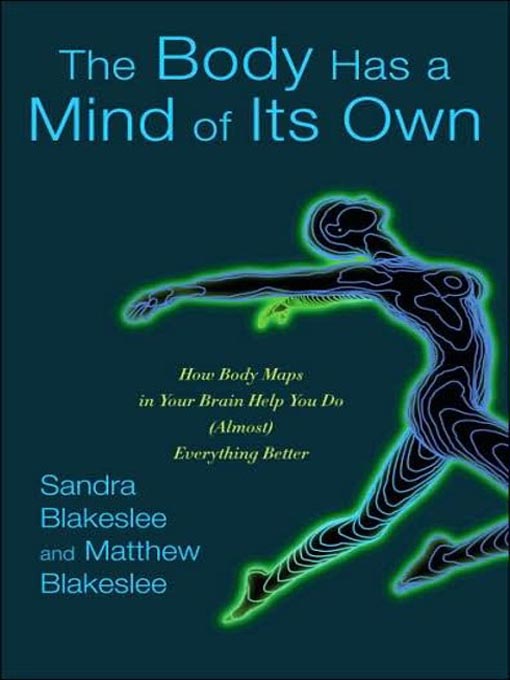The Body Has a Mind of Its Own
How Body Maps in Your Brain Help You Do (Almost) Everything Better
The answers to these questions can be found in a new understanding of how your brain interacts with your body, the space around your body, and the social world. Every point on your body, each internal organ, and every point in space out to the end of your fingertips is mapped inside your brain. Your ability to sense, move, and act in the physical world arises from a rich network of flexible body maps distributed throughout your brain.
The science of body maps has far-reaching applications. It can help people lose weight, improve their ability to play a sport, or assist recovery from stroke. It points the way to new treatments for anorexia and phantom limbs. It helps explain out-of-body experiences, auras, placebos, and healing touch. It provides a new way to understand human emotions from love to hate, lust to disgust, pride to humiliation.
With scientific discoveries from every corner of the globe, Sandra and Matthew Blakeslee have written a compelling narrative that is positively mind-bending and that will appeal to readers of Sharon Begley's Train Your Mind, Change Your Brain.
-
Creators
-
Publisher
-
Release date
October 2, 2007 -
Formats
-
OverDrive Listen audiobook
- ISBN: 9781400124978
- File size: 259428 KB
- Duration: 09:00:28
-
-
Languages
- English
-
Reviews
-
Publisher's Weekly
June 4, 2007
What do “golfer's yips,” the ability to see auras and the hypnotic appeal of video games all have in common? Each arises from the brain's body map. New York Times
science contributor Sandra Blakeslee and her son, science writer Matthew Blakeslee, begin with a quick overview of the sense of touch. According to the Blakeslees, body maps are created by the brain, using touch, to spell out the brain's experience of the body and the space around it. These maps expand and contract to include objects such as clothing, tools or even your car. Some of the more interesting subjects the Blakeslees cover include muscle tone disorders, phantom limb sensations in amputees and the inaccurate body images associated with anorexia. Sketches and sidebars explore topics in more detail, while a glossary explains technical terms. With its breezy “this is so cool” style, this entertaining book will appeal to readers who prefer their science lighthearted and low-key.
-
Loading
Why is availability limited?
×Availability can change throughout the month based on the library's budget. You can still place a hold on the title, and your hold will be automatically filled as soon as the title is available again.
The Kindle Book format for this title is not supported on:
×Read-along ebook
×The OverDrive Read format of this ebook has professional narration that plays while you read in your browser. Learn more here.

